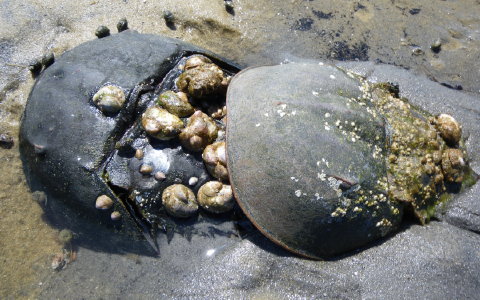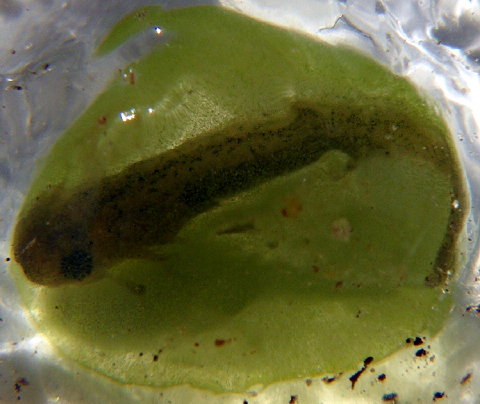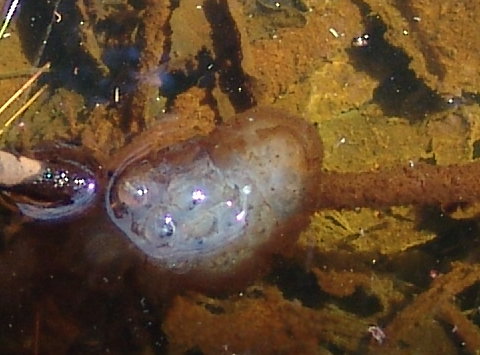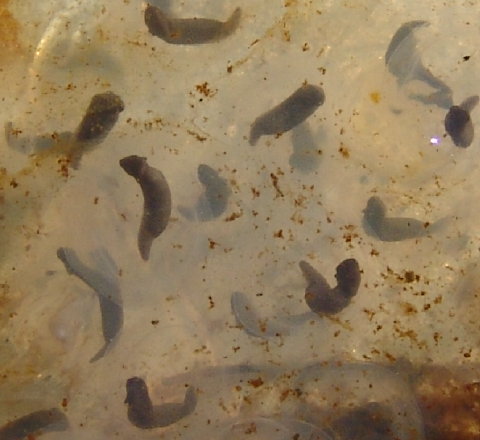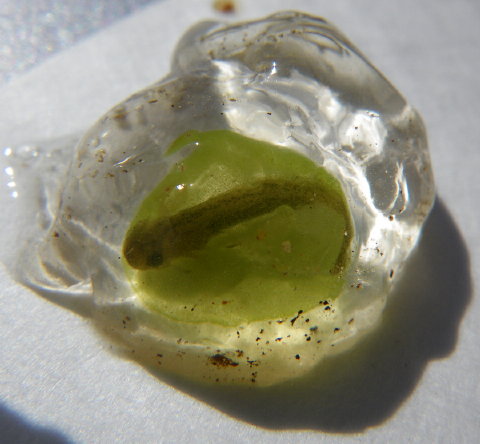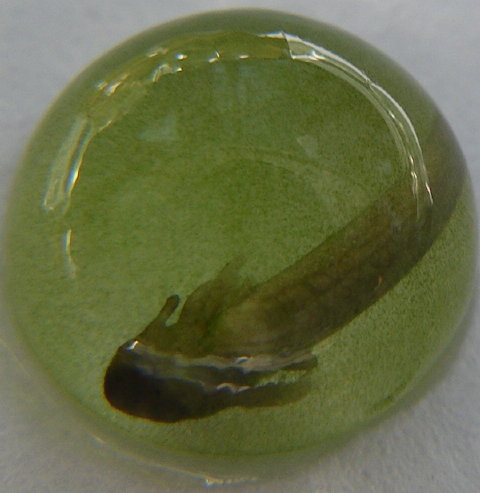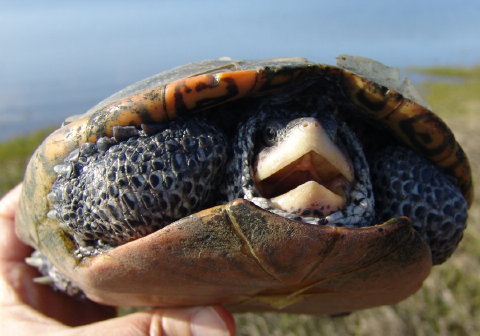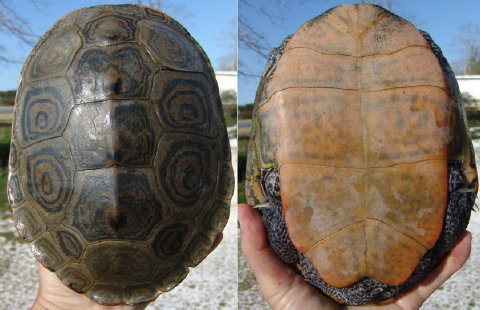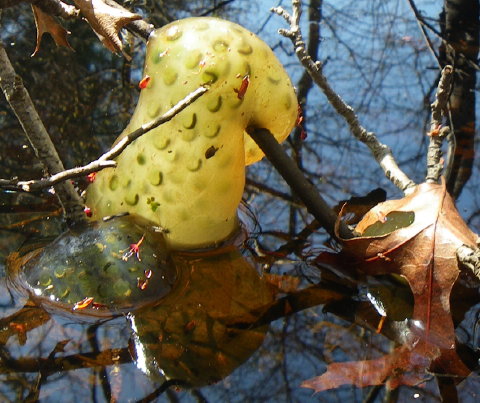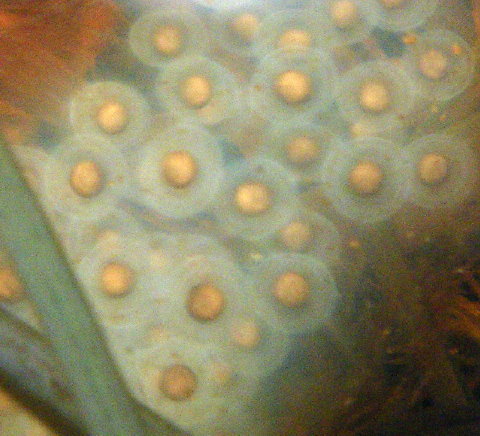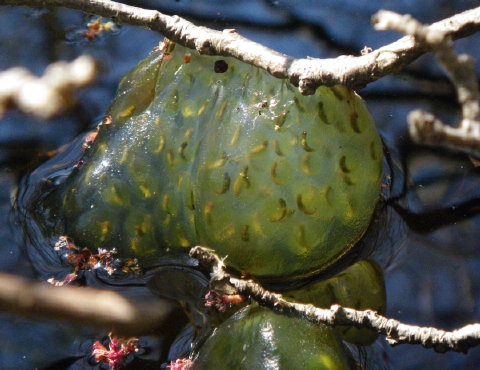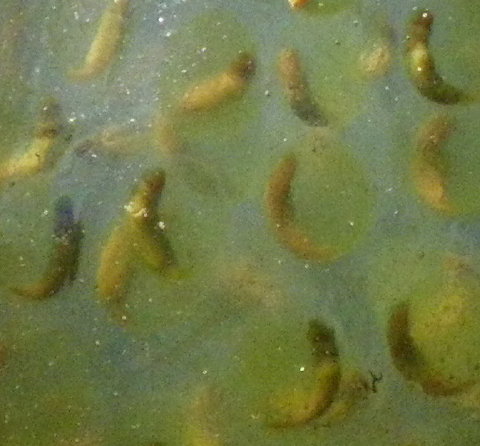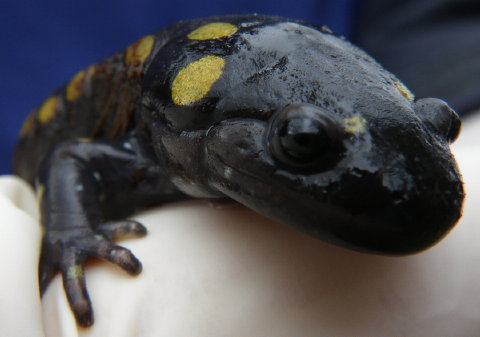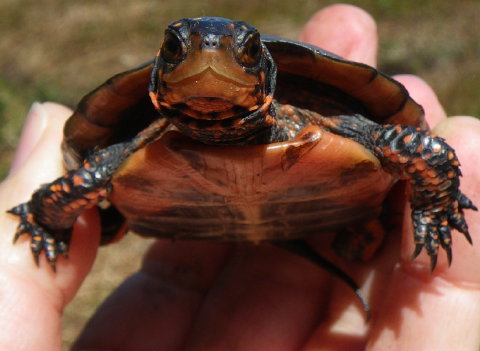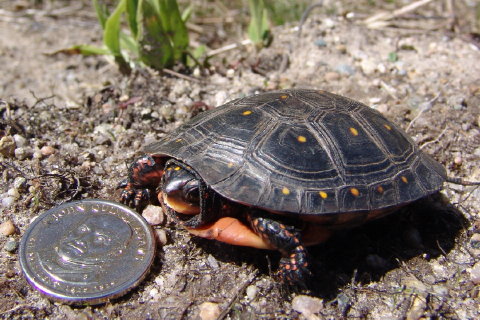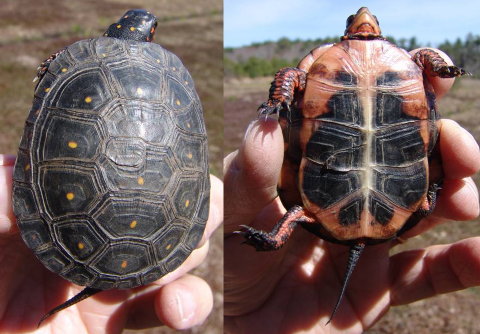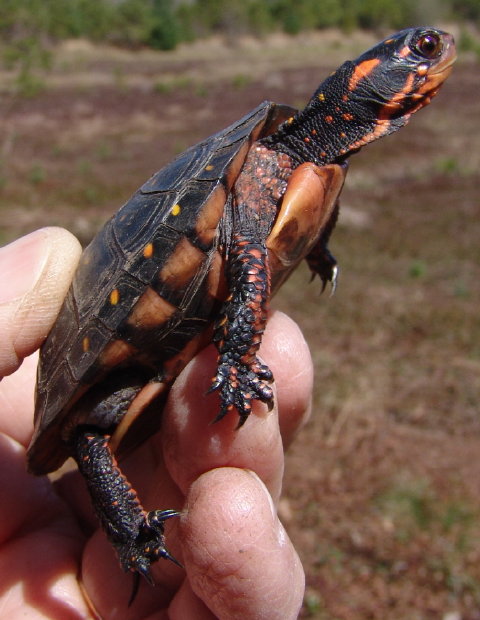Horseshoe Crab Mating Pair with Female in Front (Left)
Turtle Journal ventured into the Fresh Brook “Run” south of Lieutenant Island in Wellfleet Bay this afternoon to search for emerging diamondback terrapins. Yes, we did find a sampling of female and male terrapins, about which we will report in a subsequent posting. The surprise today was discovery of hundreds of pairs of mating horseshoe crabs streaming through the Run with males firmly clapsed onto females.
Hundreds of Horseshoe Crab Pairs Swim through Run
We could barely walk through the Run without stumbling over horseshoe crabs. Every female towed a male behind her, and yet there were still many males cruising the submerged tidal flats in search of a mate. As we walked to the water, we noted that pairs of horseshoe crabs had left their signature tracks as they deposited and fertilized eggs along the high tide line this morning.
Female Horseshoe Crab
Female horseshoe crabs are substantially larger than males, a trait known as sexual (or gender) dimorphism. During mating, males cling to females for hours and hours in hopes of being Mr. Lucky when eggs are laid on the beach at high tide.
Male Horseshoe Crab
Male horseshoe crabs are not only smaller than females, but their front limbs are formed as claspers to cling to the female during spring mating. These limbs have been described as “boxing gloves,” and along with the smaller size, they make identification of male crabs an easy one-two punch.
